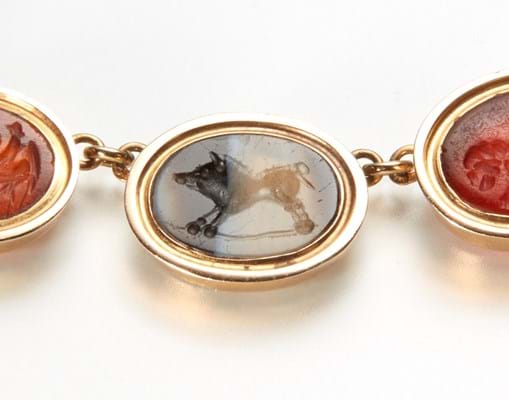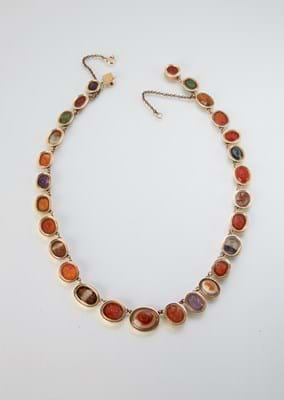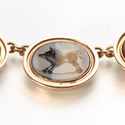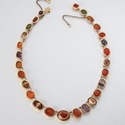Hardstone intaglios - worn as finger rings and used as seals by every businessman in the Roman empire - were a common prize for Grand Tourists. Typically bought as souvenirs from antiquities merchants in Rome, they could later be mounted as jewellery.
The late 19th century necklace, entered for sale in Cheshire by a local farming couple, is a sophisticated example, comprising 27 amethyst, cornelian, agate, chalcedony and sardonyx intaglios set in yellow gold. Keen to research its history further, trainee valuer Helena Waudby made her own Grand Tour to Oxford to seek the opinion of Dr Martin Henig of the Institute of Archaeology.
He was quickly able to identify the intaglios as Roman (rather than later copies) with most dating from the 1st century AD. Many of the carved subjects are birds and animals alongside other typical motifs such as a satyr, a charioteer and scenes from Greek mythology. Such a large cache of intaglios - perhaps unearthed in a Roman drainage system or bath site - would have represented a significant find at the time.
It carries an estimate of £2000-2500.









